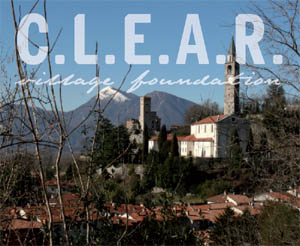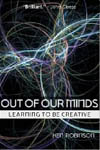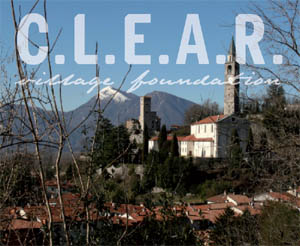
| Welcome to the Club of Amsterdam Journal. The world is changing. Some ask for change – some try to avoid it. Media is obviously changing and so will creative agencies. What is a creative agency? Creative agencies work in different fields: From architecture to advertisement, from film to web – all with the shared scope to use creativity to create business for clients. 5.8 million employees in Creative Industries accounted for a turnover in Europe of 654 billion Euros in 2003! In case you would like to hear more and also share your thoughts, visit our next event about the future of Creative Agencies on February 19 And check out our new project the C.L.E.A.R. Village Felix Bopp, editor-in-chief |
Creative Economy Report 2008
The challenge of assessing the creative economy towards informed policy-making
by UNCTAD.org
The Creative Economy Report 2008 – The challenge of assessing the creative economy towards informed policy-making is the first comprehensive study to present the United Nations perspective on this emerging topic. This policy-oriented analysis is intended to facilitate a better understanding of the key issues underlying the emerging creative economy at national and international levels. It brings together contributions from five United Nations organizations, namely UNCTAD, UNDP UNESCO, WIPO and the International Trade Centre (ITC), in a joint endeavour to enhance policy coherence and international action in this area.
Developing countries around the world can find ways to optimize the potential of the creative economy for generating economic growth, job creation and export earnings while at the same time promoting social inclusion, cultural diversity and human development.
[…]
10.2 Major findings
10.2.1 Definitions and concepts
Definitions of the “creative economy” may vary, but it is generally agreed that at the heart of the creative economy lie the creative industries. There is no single agreed definition of the “creative economy” or the “creative industries” although clearly, they embrace the concept of “creativity” as an essential characteristic. In the contemporary world, creativity is often referred to as a key resource in the knowledge economy, leading to innovation and technological change and conferring competitive advantage on businesses and national economies. The association of creativity with commodities gives rise to a class of products known as “creative goods and services”, of which, many believe, “cultural goods and services” constitute a subset formed by products with artistic or cultural as well as creative content. This in turn enables the definition of “creative and cultural industries” as those industries producing creative and cultural goods, respectively. Different models of the creative economy have different ways of identifying and classifying the creative industries, though for the purposes of this Report, the following groups of industries are included:
- cultural heritage;
- visual and performing arts;
- audiovisual industries;
- publishing and printed media;
- new media;
- design; and
- creative services, including advertising and architecture.
This Report seeks to establish a realistic benchmark of definitions of the “creative economy”. A future objective must be the generation of a robust classification system that is not dictated simply by statistical convenience or availability but rather is based on an understanding of what evidence is
required to develop policy.
10.2.2 Cross-cutting linkages
The “creative economy” is a multidimensional concept with linkages to a number of different sectors in the overall economy. Different approaches to analysing the
creative economy lead to different emphases on its various aspects. For example, a sociological approach has examined the notion of a “creative class” in society, comprising professional, scientific and artistic workers whose presence generates economic, social and cultural dynamism. Other approaches
have stressed the role of culture in terms of social empowerment. Even beyond urban planning circles, the concept of the “creative city” has become established, while geographers focus on the locational aspects of creative activity in the form of creative clusters, networks and districts. The multifaceted nature of the creative economy means that it cuts across a wide range of areas of economic and social policy in addition to any intrinsic value. Thus policy-making in relation to the creative economy is not confined to a single ministry or government department; rather, it is likely to implicate a number of different policy fields, including:
- economic development and regional growth;
- urban planning;
- international trade;
- labour and industrial relations;
- imigration;
- domestic and foreign investment;
- technology and communications;
- art and culture;
- tourism;
- social welfare; and
- education.
Moreover, there is a similar multiplicity of involvement across the public sector, the corporate sector, the non-profit sector and civil society.
10.2.3 The creative economycin the developed world
In the developed world during the 1990s, the creative industries grew faster than other sectors, including services and manufacturing. One of the major drivers of this growth was the extraordinarily rapid pace of technological change in multimedia and telecommunications that occurred during this period. In particular, digital technology opened up a range of new media through which cultural content could be delivered to consumers, and the creative industries responded by supplying an ever-widening array of creative products to the market. On the demand side, rising real incomes among consumers in developed countries, coupled with changing preferences for modes of cultural consumption, helped to sustain the growth of the creative economy. By the middle of the first decade of the new millennium, the proportion of GDP contributed by the creative industries in developed countries averaged around 3 to 6 per cent. For example, recent estimates collated by OECD for member countries indicate that the creative industries in France and the United States made up about 3 per cent of gross value added in 2002-2003 and almost 6 per cent of gross value added in the United Kingdom.
10.2.4 The creative economy in the developing world
The engagement of developing countries with the creative economy varies dramatically around the world partly because of differences in the industrial and export capabilities of different countries but partly also because of variation in the extent to which different countries have recognized and implemented a deliberate development agenda for the creative sector. In Africa, for instance, there has been only limited commercialization of creative products. Perhaps the most obvious illustration is music, a form of cultural expression that is of particular importance on the African continent. Much of the music industry in Africa remains based on live performance, with formal production and circulation of music products still awaiting further development. A salient issue here is that developing countries commonly lack the institutional resources to manage copyright collection and payment systems. Accordingly, star performers are frequently attracted overseas in search of wider opportunities or simply in pursuit of payment for what they do. Some areas of Asia, by contrast, are at the leading edge of innovation in creative production, as in the case of video games in the
Republic of Korea. Likewise, a number of Asian cities are formulating urban development strategies with a strong emphasis on cultural and creative activities. In the Caribbean and Central and South America, the state of the creative industries varies considerably across the board, with different industries being the focus of attention in different countries, such as publishing in Argentina, music in Jamaica or the film industry in Mexico.
10.2.5 The value chain for creative products
It is essential to understand the value chain for the production and distribution of creative goods and services in order to determine optimal points of intervention for policy initiatives designed to boost the creative economy. A systematic understanding of who the stakeholders in the creative economy are, how they relate to one another, and how the creative sector relates to other sectors of the economy is critical for informed policy-making.
One tool that has proven useful for studying the creative economy is value-chain analysis, which depicts the progress of creative goods from an initial idea through to final consumption. In particular, it is important to examine the early stages in the chain, i.e., to understand the structure of the production sector for creative goods and services. Production units in this sector range from individual artists and producers on the one hand to large transnational corporations on the other. In between are small and medium-sized enterprises (SMEs), which, in many developing-country situations, comprise the most significant element in terms of volume of output and levels of employment and community engagement. In a number of instances, these businesses offer the best prospect for combining economic revenue potential with the development of authentic cultural symbols and traditions, for example in the production of craftware, fashion products, music recordings, etc. Indeed, SMEs may become the cornerstone of locally based strategies for sustainable development of the creative industries, enhancing the economic, cultural and social life of the community. Value-chain analysis also enables identification of creative products and services with particular competitive advantages or that are capable of being developed as niche markets in particular situations.
10.2.6 Data issues
Reliable data on the creative economy – on its inputs, outputs, value of production, prices, employment and trade – are in short supply among developing countries, and there is an urgent need to improve statistical collections as a basis for formulating creative-industry policy. The lack of a tradition for economic valuation and measurement in the cultural sphere, combined with difficulties of definition in the realm of cultural activities and creative goods and services, has meant that there has been a dearth of reliable indicators on which to base assessments of the size and scope of the creative economy. Moreover, the rapid pace of technological change has made it difficult to keep abreast of new products and services constantly coming onto the market.
Thus at present, we have only a limited set of measures of creative-industry output, employment and trade. In an ideal world, these are the data with which we might start. In addition, data on participation and cultural and creative activity time-use would help to develop a more holistic perspective. Even so, new models are required. In regard to creative employment, for example, statistics on occupation by industry are necessary to assess the linkages between the creative industries and other sectors while data on the locational distribution of employment is important for analysis of creative clusters. In regard to trade, although exports and imports of physical products produced by the creative industries are documented (as in the statistical tables on trade in creative goods and services assembled as part of this Report), the increasing dematerialization of cultural products has made statistical tracking of trade problematic. In regard to audiovisual products, for example, the international market in rights and services certainly exceeds the physical market in value terms, yet documentation of the volume and value of rights trade is difficult to obtain. Nevertheless, it is possible to make some progress towards improving our understanding of international trade of creative products through a combination of existing trade data and statistics on copyright payments.
10.2.7 Trade
Despite the problems in measurement, it is possible to assemble consistent data on trends in exports and imports of creative products classified by region and by product category. In a pioneering exercise, this Report presents a universal comparative analysis of trade in creative goods and services, based on national trade statistics that can serve as a starting point in the development of more comprehensive and more transparent statistical collections. This exercise draws attention to the complexity, the heterogeneity and the multidisciplinary nature of the creative economy and points to the difficulties in conceptualizing, classifying and measuring production and trade of the creative industries. The actual figures for trade are without doubt an underestimate and skewed towards production, as this is where data collection concentrates.
As noted above, the material aspect of the creative economy is potentially less important than its immaterial/rights dimension; unfortunately, however, this is
the domain on which we have the least information. Moreover, we have little knowledge of the effective modes of governance of this trade. WIPO has made some useful interventions in this field, but its objective is regulation; thus it
focuses on different variables. The trend analysis shows that trade in creative goods and services over the last decade has shown an unprecedented rate of growth as compared to the more traditional manufacturing and services. Assuming this growth continues in the coming years, it will open up new opportunities for developing countries to increase their market shares of global trade in creative products.
10.2.8 Connectivity and ICTs
As noted earlier, a major driver of the growth of the creative economy worldwide has been the advent of new information and communication technologies (ICTs). Of course, ICTs benefit the whole economy but their role in the creative industries is of particular significance. They offer new distribution channels for creative content; allow the adoption of innovative entrepreneurial business models; and
strengthen the links between creativity, culture, technology and economic development.
In the context of developing countries, ICTs have a strong potential to boost socio-economic development, especially through the opportunities that they provide to SMEs to broaden their customer bases and increase their participation in international supply chains. ICTs can leverage new links in the value chain in many creative industries, especially via the phenomenon of digital convergence. Again, however, measurement issues arise, especially in assessing Internet penetration and usage, the extent of e-commerce, etc. Efforts are under way in different parts of the United Nations system to meet the challenges of new technologies through international cooperation, for example in the compilation of standardized statistics, the promotion of a global hub for networking, and support for creative-economy expos to expand understanding of the creative industries in a digital environment.
10.2.9 Policy towards the creative economy
The cross-cutting nature of the creative economy means that policy development for the creative industries must be formulated on a coordinated interministerial basis. The range of instruments that can be used by policy-makers in charting
development strategies for the creative industries in developing countries is wide indeed. In broad terms, the need is for infrastructure development and capacity-building to reinforce the operation of fiscal policies, competition law and
intellectual property regimes in addition to traditional debates about intrinsic value. In more specific terms, policy initiatives may be undertaken in:
- mapping of inventories of cultural assets and creative industries;
- SME business development and finance (e.g., micro-finance);
- copyright legislation and enforcement;
- support for artists and the arts, both direct (via fiscal means) and indirect (through encouragement of privatesector support);
- conservation of tangible and intangible cultural heritage;
- expansion of digital capacity and know-how;
- market development, both domestic and export;
- tourism promotion;
- education, training and skills development; and
- industry assistance (e.g., via investment incentives, tax concessions, etc.).
As a result, policy development cannot be confined to a single ministry but requires co-ordinated action across a range of ministerial responsibilities, and although mainly urban in location, it is important in rural areas, too. The appropriate development paradigm is one based on sustainable development measured in economic, cultural, social and environmental terms. Only by adopting such a paradigm shift can we recognize the breadth and depth of
the potential contribution of the creative industries to developing countries.
10.2.10 International context
The creative economy features in a number of arenas of international policy-making. The challenge is to create a positive environment to optimize the potential of the creative economy for development gains. Moreover, given the multifaceted and multidisciplinary nature of the creative economy, governments can benefit from synergy and expertise from the United Nations system to analyse key issues to assist them in policy formulation.
Policy-makers need to be aware of a number of subtleties in dealing with the creative economy. In the area of trade, for example, ongoing multilateral negotiations continue to encounter difficulties in dealing with cultural products
although it should be noted that the General Agreement on Trade in Services (GATS) has built-in flexibilities that developing countries can use to strengthen their creative industries. The Agreement on Trade-Related Aspects of Intellectual Property Rights (TRIPS) offers some prospect for consideration of topics related to the creative economy, but to date, matters such as folklore and traditional knowledge have received little attention. Undoubtedly, a major area for national and international action is the copyright area. Further development of the creative sectors of many developing countries depends critically on having in place an effective copyright regime, as well as the implementation of the WIPO Development Agenda. Other initiatives for trade expansion are under way, for example the development of opportunities for increased South-South trade as part of the work of the UNDP Special Unit for South-South Cooperation and the facilitation of business opportunities for creative entrepreneurs by ITC.
An important step forward in raising the profile of the creative sector in developing countries has been the ratification of the UNESCO Convention on the Protection and Promotion of the Diversity of Cultural Expressions. This treaty draws particular attention to the role of the creative industries as a source of economic and cultural empowerment, particularly in the developing world, and encourages countries to give greater prominence to policy-making in this area. All of these international aspects should be seen in the context of the Millennium Development Goals. The Goals provide a set of strategic objectives and the creative industries in developing countries are well placed to contribute to their achievement.
Summary of key messages
The key messages of this Report can be summarized as follows:
- Evidence shows that trade in creative goods and services is important to the economies of developing countries, and the importance of this trade highlights the strength of the creative economy in many parts of the developing world. Despite the difficult obstacles that many developing countries face in accessing global markets for creative products there is the potential for looking to export expansion as a source of growth for the creative economies of these countries.
- Policy strategies to encourage the development of the creative industries in Southern countries must recognize the cross-cutting and multidisciplinary nature of the creative economy, with its widespread economic, social and cultural linkages and ramifications. Key elements in any package of policy measures are likely to emphasize the “creative nexus” between investment, technology, entrepreneurship and trade.
- Evidence-based policy-making is hampered at present by a lack of comprehensive and reliable data on the various dimensions of the creative economy.
Progress can be made in assessing production and trade in creative products in developing countries using existing statistical sources. Further progress, however, requires the development of new models for gathering data (qualitative and quantitative) concerning the creative industries and how they function within the economy as well as improvement in the quality of current data-collection processes. - Current IPR legislation has not been able to avoid economic asymmetries. Therefore, efforts to enforce IPR regimes should ensure that the interests of artists and creators from developing countries are duly taken into account. Intellectual property should provide a stimulus to creators and entrepreneurs in the form of a tradable economic asset that is instrumental to enhancing the potential of the creative sector for development.
Next Event

the future of Creative Agencies
Thursday, February 19, 2009
Registration: 18:30-19:00, Conference: 19:00-21:15
Location: Platform 21, Prinses Irenestraat 19, 1077 WT Amsterdam [between WTC and RAI]
The conference language is English.
Supporter: Info.nl
Our speakers are
Jann C. de Waal, Managing Director, Info.nl
A new breed of creative agencies
Paul Hughes, Strategic Director and Partner, Lava graphic studios, Coach to the Creative Class
Design for change
Robert Marijnissen, Programme Manager, Creative Cities Amsterdam Area (CCAA)
The City as a Creative Agent
Jochem Leegstra, Founder, Creative Director, …,staat creative statements
Moderated by Seth van der Meer, Creative Director, Sandfire b.v., Chairman, NLGD Festival of Games
Club of Amsterdam blog

News about the Future

| Singularity University to Study Accelerating Technologies, Launches at NASA Ames With the support of NASA, Google and a broad range of technology thought leaders and entrepreneurs, a new university will launch in Silicon Valley this summer with the goal of preparing the next generation of leaders to address “humanity’s grand challenges.” Singularity University (SU) will open its doors in June 2009 on the NASA Research Park campus with a nine-week graduate-level interdisciplinary curriculum designed to facilitate understanding, collaboration, and innovation across a broad range of carefully chosen scientific and technological disciplines whose developments are exponentially accelerating. SU co-founders Dr. Ray Kurzweil and Dr. Peter Diamandis will unveil plans for the new university today at the annual TED (Technology, Entertainment and Design) Conference in Long Beach, Ca. “We are now in the steep part of the exponential trajectory of information technologies in a broad variety of fields, including health, nanotechnology, and artificial intelligence,” said Kurzweil. “It is only these accelerating technologies that have the scale to address the major challenges of humanity ranging from energy and the environment, to disease and poverty. With its strong focus on interdisciplinary learning, Singularity University is poised to foster the leaders who will create a uniquely creative and productive future world.” |

| Invention turns cell phone into mobile medical lab In the lab of UCLA electrical engineering professor Aydogan Ozcan, a prototype cell phone has been constructed that is capable of monitoring the condition of HIV and malaria patients, as well as testing water quality in undeveloped areas or disaster sites. The innovative imaging technology was invented by Ozcan, a member of the California NanoSystems Institute at UCLA, and has been miniaturized by researchers in his lab to the point that it can fit in standard cell phones.Professor Ozcan has taken a typical Sony Ericsson phone, and by adding a few off-the-shelf parts that cost less than $50, he can get it to produce a remarkable image that shows the thousands of cells in a small fluid sample such as human blood.Because red blood cells and other microparticles have a distinct diffraction pattern, or shadow image, they can be identified and counted virtually instantaneously by LUCAS (Lensless Ultra-wide-field Cell monitoring Array platform based on Shadow imaging) using a custom-developed “decision algorithm” that compares the captured shadow images to a library of training images. Data collected by LUCAS can then be sent to a hospital for analysis and diagnosis using the cell phone, or transferred via USB to a computer for transmission to a hospital. |
C.L.E.A.R. Village Lab

C.L.E.A.R. Village Lab
co-design a real-life sustainable village
In a nutshell
C.L.E.A.R. Village Lab is a collaborative design event: C.L.E.A.R. Village Foundation‘s first step to co-create a groundbreaking sustainable village. A ‘dream team’ of up to 100 professionals from complementary industries will be assembled, working together to produce a replicable blueprint. Involvement will push your sustainability work far beyond your existing experience.
Your participation in the project will confirm your valuable contribution and commitment to sustainable design, as well as connecting you with other key figures in the arena. As you bring one of the world’s most inspired eco-design projects to life, you will gain a rewarding and memorable experience that will bring you prestige, insight and new business opportunities.
C.L.E.A.R. Village Lab experience
C.L.E.A.R. Village Lab is immersive and intense. Putting participation first, the schedule will evolve organically, guided by four renowned thought leaders. With no rigid structure or scheduled breaks, the team can set its own agenda, working on the areas it finds most rewarding and synergetic.
Working towards a physical outcome, we start with as few preconceptions as possible. This will let the team build in sustainable systems and designs from the ground up. Starting with the bigger picture, the team will drill down to specific components and features.
During group work and discussion, C.L.E.A.R. Village‘s illustrators will bring concepts to life on the fly. Other real-time technologies, such as live text feedback and collaborative 3D modelling, will enhance communication and engagement.
C.L.E.A.R. Village Foundation will then act on the decisions of the team, moving the project forward to its next phase.
Recommended Book

Out of Our Minds: Learning to be Creative
by Ken Robinson
“This really is a remarkable book. It does for human resources what Rachel Carson’s Silent Spring did for the environment. It makes you wonder why we insist on sustaining an education system that is narrow, partial, entirely inappropriate for the 21st century and deeply destructive of human potential when human beings have so much latent creative ability to offer. A brilliant analysis.” Wally Olins, Founder, Wolff-Olins “Competitive advantage does not come from the Internet. It comes from leveraging creativity . All corporate leaders should read this book.” Professor Richard Scase, author, Britain in 2010 “I thoroughly recommend this excellent book. Developing our latent creative ability is vital for personal and professional success. Ken Robinson gives us the signposts we need to achieve this.” Sir John Harvey Jones “If you would like to start to unlock the inherent creativity that exists in every human being (including you), then start (you have to) by reading this book!” Simon Woodroffe, Founder, Yo Sushi, and former Entrepreneur of the Year “Ken Robinson’s is an original and creative mind. I can think of no better spokesperson on creativity. His views are as much directed to learning institutions as they are to industry. Out of Our Minds is a genuine challenge to complacency.” Ruth Spellman, Chief Executive of Investors in People, UK “Sometimes a writer has an uncanny knack of sharply focusing something which up until then you had not seen in all its simplicity and brilliance. This book does that but at the next moment it makes connections never before imagined…Even the most obstinately prosaic and safe thinkers will be tempted out of their box by Ken Robinson’s ideas, theories and speculations. What’s more, he writes as he speaks, in a way that, magnetically and compulsively, is simply irresistible” Professor Tim Brighouse, Director of Education, Birmingham
Alternative medicines – a possible threat to pharmaceutical industry?

The definition of alternative medicine is ‘a group of diverse medical and health care systems, practices and products that are not presently considered to be part of conventional medicine.’
Complementary and Alternative Medicines (CAM) are practices that incorporate spiritual, methaphysical, or religious underpinnings; non-evidence based practices, non-European medical traditions, or newly developed approaches to healing. The list of therapies included under CAM changes gradually. For instance, prayer has been labeled a CAM by some authors.
If a hitherto unproven therapy is proven to be safe and effective, it becomes adopted into conventional health care and gradually ceases to be considered ‘alternative’, since adoption and acceptance often take time. If a CAM therapy is proven dangerous and ineffective, and some supplements have been found to contain high amounts of impurities, it should cease to be advocated by CAM practitioners, although there are no clear instances of this happening. In fact, as little as 5% of CAM has ever been scientifically proven to be effective. This does not necessarily mean that 95% are ineffective but rather that not enough tests have been carried out although many claims are difficult to believe and have no scientific basis. Placebo effects are also possible and may account for some of the healing.
Some scientists reject the classification of alternative medicines and CAM, and even reject the term ‘alternative medicine’ itself.
Since many alternative remedies have recently found their way into the medical mainstream, and are becoming economically significant, the general position is that there cannot be two kinds of medicine – conventional and alternative. There is only medicine that has been adequately tested and medicine that has not, medicine that works and medicine that may or many not work. Once a treatment has been tested rigorously, it no longer matters whether it was considered alternative at the outset. If it is found to be reasonably safe and effective, it will be accepted. A major problem has been the fact that most CAM treatments have not been evaluated scientifically. In fact, some scientists believe it is not possible to undertake scientific assessments of the efficiency of CAM treatments, since some of the basic assumptions in these approaches to health do not lend themselves to such a study. CAM practitioners are not particularly interested in carrying out scientific studies, and their basic training often does not include basic scientific understanding of double mind methodology.
Alternative medicine is believed by some patients to be safe. It is not used in emergency cases but rather to combat chronic diseases and as prevention, as well as for the spiritual and emotional satisfaction of the patients. It is when CAM is self-prescribed that it is the most dangerous.
Sometimes patients will not dare mention they have been treated with CAM particularly if the believe they will be met by ignorance, skepticism, or worse on the part of the medical practitioner. Further, medical practitioners will tend to refer patients for CAM treatments only if traditional therapies failed.
Although some would argue that these types of healing methods are not scientifically approved or even tested, alternative medicine is to be considered as a major competitor to traditional pharmaceuticals particularly as it is getting increasingly popular. Choice is often governed by the speed of efficiency of the treatment. Patients wanting rapid cure of an acute disease will most likely select, at least initially, a mainstream medical treatment while chronic disease that will require long-term treatment, may be perceived to be best treated with a CAM approach.
Products used in natural medicine are not always tested and therefore can be very harmful. Natural products can also have different strengths depending on the year and place of collection – for instance in the case of plants or plant extracts. People have related natural medicine with safety – however, this is not always the case. Complementary and alternative medicine includes thousands of different methods such as herbalism, homeopathy, art therapy, and even yoga, tai chi and prayer are used for healing. People turn to alternative medicine even for critical conditions such as cancer. Women are more likely to use alternative medicine and more than 50% of adults, 18 years of age and over, have used some form of alternative medication in the US.
In the UK a study has shown that there is no evidence to show that herbal treatments specially tailored to individual patients are efficient. In fact, the UK government is about to regulate herbal medicine.
In some cases alternative medicine is promoted by the government. In India, for example, the department of AYUSH was established to supervise the Indian system of medicines and homeopathy in the Ministry of Health and Family Welfare. AYUSH stands for Ayurveda, Yoga and naturopathy, Unani, Siddha and Homeopathy. Approximately 10% of the population is solely dependent on Indian medicine for their needs.
Government regulations differ concerning the decision as to which alternative medicine branches are legal, if any, and which are provided by a government controlled health service or by a private health medical insurance company.
Medicine advocates disagree with government regulations and restrictions of alternative medicines. They claim that this is an obstacle, for those who are seeking to give useful and effective treatments and approaches to the public. Alternative medicine providers often argue that health fraud should be dealt with appropriately when it occurs.
Even if there is no fraud, one of the main dangers of alternative medicine is that it will keep the patient away from a conventional and effective treatment, eventually causing the patient’s death.
In the US there has been a rise in the number of medical colleges that are offering courses in alternative medicine – 60% of the standard medical schools, 95% of the osteopathic medical schools and 84.8% of the nursing schools – teach some form of CAM. There has also been a rise in the number of naturopathic colleges and schools in the US.
It is estimated that one third to one half of the general population in developed countries uses complementary and alternative medicine with a large number of patients suffering of one or another form of cancer seeking alternative therapies.
Alternative medicine can also be used alongside conventional medical treatments as complementary medicine particularly to alleviate pain and symptoms due to the treatment rather than the disease itself. Acupuncture and massage in particular, has been used successfully as well as meditation, yoga and other spiritual exercises.
It is, in fact, possible that it is the contact with the therapist that has a beneficial effect on the patient, rather than the treatment itself.
Not all alternative treatments have side effects, but patients, think that ‘natural’ translates to ‘safe and no side effects’, but sometime nature can be harmful. All alternative treatments that have a biological or physiological impact may have harmful biological and physiological side effects.
It has thus been shown that certain alternative medicines, such as reflexology and phytotherapy, reduce the possibilities of pregnancy in women who are subject to IVF – in vitro fertilization. It remains to be seen, however, if alternative medicines are not used as a means of last recourse by women who in any case have little chances of having a successful pregnancy.
Herbal treatments can interfere with more classic therapies such as chemotherapy or radiotherapy. They can also contain toxins and pollutants and plants, when mixed, can increase an originally low toxicity.
Some alternative medicines cost as much as a conventional drug. For instance, a tin of 150 grams of Korean Ginseng is sold over the Internet at $ 300.
There is also the issue of the qualification of the practitioner and his ability, and willingness, to address patients to ‘classic’ practitioners if the patient’s symptoms lead him to suspect a serious pathology or one which he is unlikely to be able to treat.
In conclusion, one can say that while the use of alternative medicines seems to progress in developed countries, it presents, at present, a threat to patients more than to the pharmaceutical industry.
Futurist Portrait: Peter Cochrane

Peter Cochrane, CEO of Cochrane Associates, is a futurist, business mentor, advisor, consultant, and angel to a wide range of government departments and international companies in the UK and USA.
Throughout his career, Peter has worked across a broad spectrum including: circuit, system, and network design; software production and manufacture, machine programming, switching, and transmission; human interfaces; adaptive systems and control; AI and AL; company transformation and management system design.
Peter was formerly CTO and head of research for British Telecom. He has held numerous academic posts, including the Collier Chair for the Public Understanding of Science & Technology @ Bristol, and visiting Professor to CNET, Southampton, Nottingham Trent, Robert Gordon’s, Kent and Essex Universities.
He is currently a visiting professor at University College London. He has also received numerous prizes and awards, including the City & Guilds? Prince Philip Medal, the IEEE Millennium Medal, an OBE, and the Queen?s Award for Innovation and The Martlesham Medal.
Limits to human intelligence and robotic competition
Agenda

| Febuary 19, 2009 18:30 – 21:15 | the future of Creative Agencies Location: Platform 21, Prinses Irenestraat 19, 1077 WT Amsterdam | |
| March 19, 2009 18:30 – 21:15 | the future of the Brain Location: De Waag, Nieuwmarkt 4, 1012 CR Amsterdam [Center of the Nieuwmarkt] | |
| April 23, 2009 18:30 – 21:15 | the future of Games Location: | |
| May 2009 | the future of BioMed | |
| June 2009 | the future of Connectivity Location: London |

| C.L.E.A.R. Village | ||
| June 4–6, 2009 | C.L.E.A.R. Village Lab Location: Institute of Advanced Architecture, Barcelona, Spain | |
| September 1–2, 2009 | C.L.E.A.R. Village Forum Location: DGI-byen, Tietgensgade 65, DK – 1704 Copenhagen V, Denmark |








Customer Reviews
Thanks for submitting your comment!